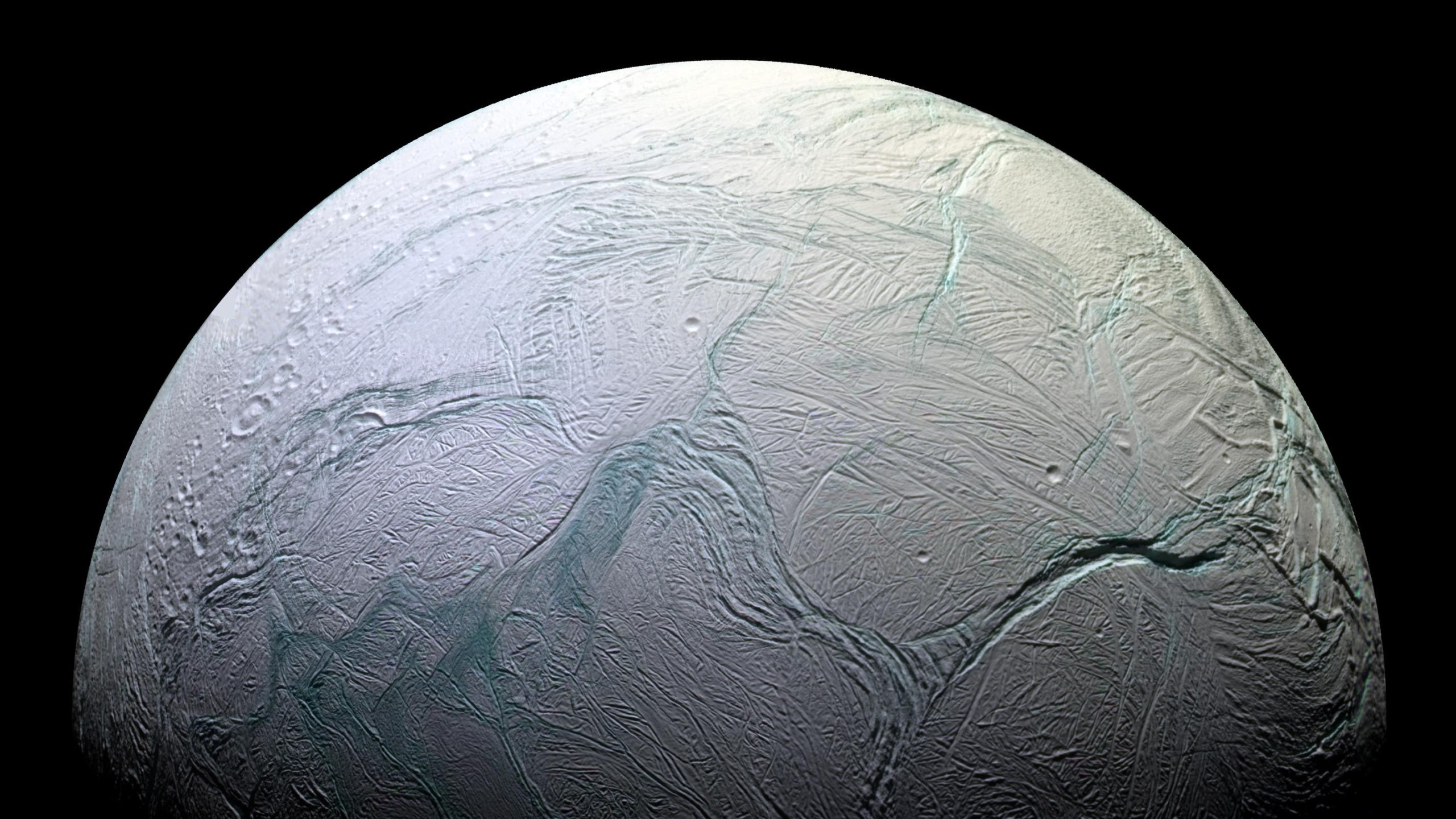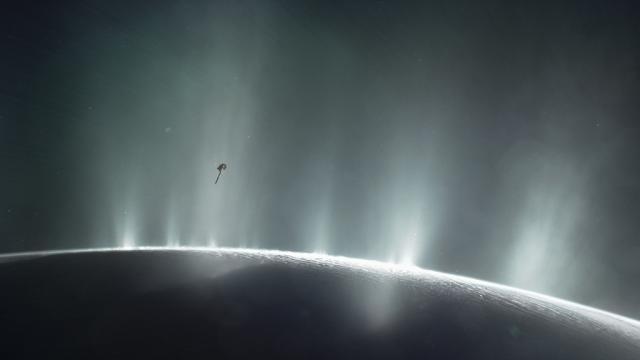After NASA’s announcement last week, Enceladus is the icy moon on everyone’s mind — not that are are many others (sorry, Europa). According to the agency, molecular hydrogen has been found in Enceladus’ subterranean ocean, which bolsters the idea that the icy moon could host extraterrestrial microbes. Despite Enceladus’ frigid exterior, this ocean is thought to be extremely warm at the bottom — roughly 90C. So if you’re an astrobiologist or tinfoil hat believer like me, this is very exciting because, well, aliens. Obviously.
Image: NASA
While discovering hydrogen is certainly exciting, astronomers and nerds alike have long hypothesised that Enceladus could harbour life. In 2015, NASA’s Cassini spacecraft flew through one of Enceladus’ icy plumes and collected fragments of organic compounds. The icy moon instantly graduated from being just one of 62 Saturnian satellites to a favourite among astrobiologists. With water and organic compounds, Enceladus has the right stuff to host life, past or present.
The question is, what could live on a rocky ice ball with an enormous ocean lurking under its crust? Obviously, there’s no concrete answer, but it’s fun as hell to speculate.
“I think that, within the solar system, if we’re going to find anything extant [that is, living], it’s going to be some sort of microscopic organism,” Rocco Manicelli, an astrobiologist at NASA, told Gizmodo. “And if we find anything extinct, it’s going to be an extinct microscopic organism.”
Though it’s highly unlikely that Enceladus is hiding any alien narwhals beneath its crust — though, fingers crossed — if there’s anything on this icy world, it’s gotta be tough. Because Enceladus’ surface reflects so much light, it reaches unbelievably cold temperatures, plummeting as low as -201C. The severe cold doesn’t rule out the possibility of life on Enceladus, but it does complicate how organisms on it would function.

Image: NASA
“The key question is, what does life need to do?” Manicelli said. “Life needs to have a source of energy and it needs to be able to make more of itself. [On Enceladus], what we have to speculate about is, what would be a real energy source? Because the ice layer is so thick, the energy that [microorganisms] would get from sunlight would be extraordinarily low.”
If there’s any life on Enceladus, it’s probably concentrated around its hydrothermal vents, which are also key to sustaining marine ecosystems on Earth. As we’ve previously reported, the discovery of what could be the world’s oldest fossil suggests that life on Earth may have grown out of these very vents — they’re seriously that critical. Here, all sorts of deep sea critters — like tube worms and certain species of shrimp — are able to survive, despite having very little access to sunlight. These organisms are able to survive by undergoing chemosynthesis — a process in which “microbes at the base of the food chain convert chemicals from the vents into usable energy,” according to Ocean Portal.
Enceladus may not have all of the ingredients capable of producing complex organisms, but this new study seems to suggest that, at the very minimum, it can sustain microbial life. And who knows, perhaps these microbes could take advantage of whatever resources are available on this moon, and evolve accordingly — still hoping for space narwhals, obviously.
There’s also the possibility that Enceladian microbes use bioluminescence to survive. This process is used by certain deep sea creatures to convert energy and thus create light in extremely dark environments. For organisms living many kilometres beneath Enceladus’s crust, this seems like a viable option.
“To get real bioluminescence, you have to have an energy source,” Manicelli explained, “and then you have that energy source emit electrons in a wavelength that something can detect them. So yeah, it is a definite possibility… we know organisms that live in the eyes of certain fishes that are very deep beneath the surface of the ocean are bioluminescent and they [give off light] in the visible wavelength range.”
We know that Enceladus has all the basic ingredients for life, so all that’s left to do some work on the ground. NASA has been mulling over such missions, including the proposed Enceladus Life Finder (ELF). According to Manicelli, it’s going to take a multifaceted approach to finally find microbes on this icy moon, if there are any at all. So think more sampling of ice on the surface and more sampling icy plumes.
“We’d have to have a whole suite of things, it can’t just be one or two, we’d need a full suite of biosignatures, taken in context with the environment in which those biosignatures were made,” he explained.
It seems all but impossible that we’ll find any bioluminscent whales hiding in Enceladus’ ocean, but hey, there’s always hope for space tardigrades. Those resilient little bastards can survive anything.
“Water bears are fascinating,” Manicelli said. “It’s not beyond the realm of possibility. They’re pretty hearty little creatures.”
